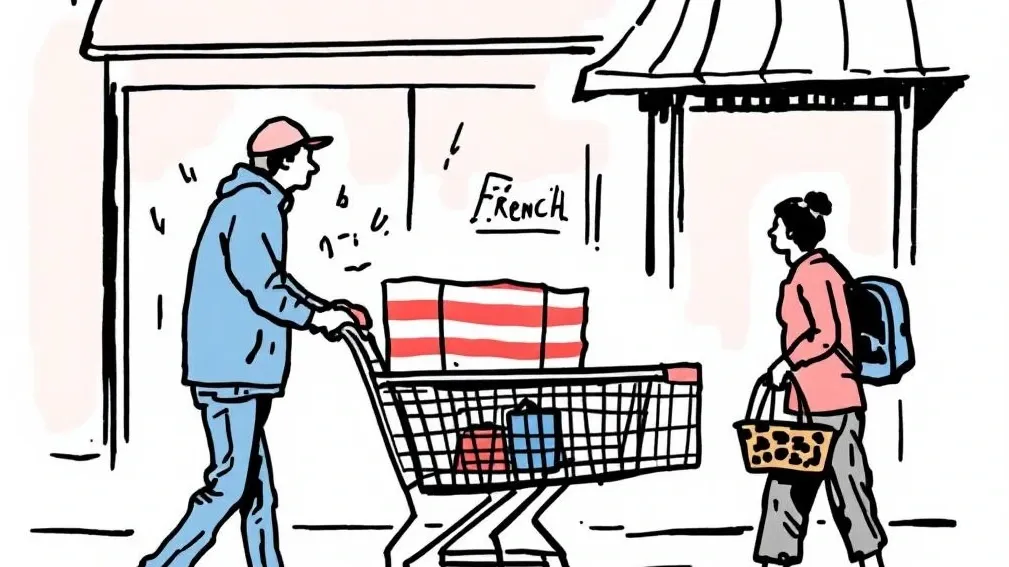The Shopping Cart Revolution
 Rea,
Rea,
You know how different cultures can solve the same problem in completely opposite ways? Take something as basic as buying food. Americans and French people both need groceries, but they’ve created entirely different systems that shape how they think about time, community, and even what makes a good day.
The American approach started with a simple problem in 1937. Sylvan Goldman owned a grocery store in Oklahoma City and noticed customers would stop shopping once their hand-held baskets got too heavy. He watched people leave his store with half-empty baskets, losing money every day. Goldman had an idea: what if people could carry more without the weight?
He took a folding chair, attached two wire baskets, and added wheels. The first shopping cart was born. But customers hated it! Men thought it looked like a baby carriage. Women worried it made them appear weak. Goldman had to hire actors to push carts around his store, pretending to shop, just to convince real customers to try them.
Within a few years, shopping carts transformed American grocery culture. Stores got bigger because people could buy more. Weekly shopping trips replaced daily visits. Families started planning meals a week ahead and storing food in larger refrigerators. The average American now shops 1.6 times per week, filling carts with enough food for days.
Meanwhile, French culture developed in the opposite direction. Most French people shop 4.2 times per week, visiting small neighborhood markets with tiny baskets. They buy fresh bread daily, select vegetables for that evening’s dinner, and chat with vendors who know their names. French supermarkets exist, but they’re about one-tenth the size of American stores.
The difference isn’t just about cart size - it’s about rhythm. American shopping prioritizes efficiency: get everything done quickly so you can move on to other activities. French shopping treats food buying as part of daily life worth savoring. Americans plan meals in advance; French people decide what to eat based on what looks good that day.
Both systems work perfectly for their cultures. American families save time with weekly shopping trips, leaving more hours for work, sports, and other activities. French families use daily shopping as social time, building relationships with neighbors and staying connected to seasonal food cycles.
The shopping cart revolution shows how one simple invention can reshape an entire culture’s relationship with food and time. Goldman just wanted to sell more groceries, but he accidentally created a system that values convenience and planning over daily ritual and spontaneity.
Love, Abba
P.S. When you’re in Paris this fall, try counting how many different food shops you pass in just one block. You might discover why French people think differently about their daily rhythm!

